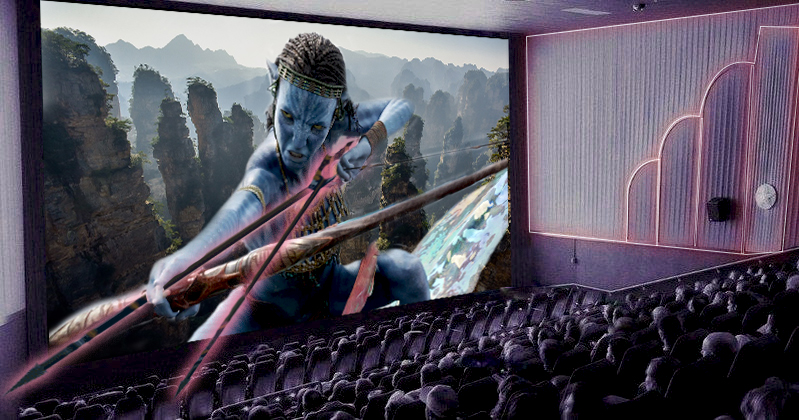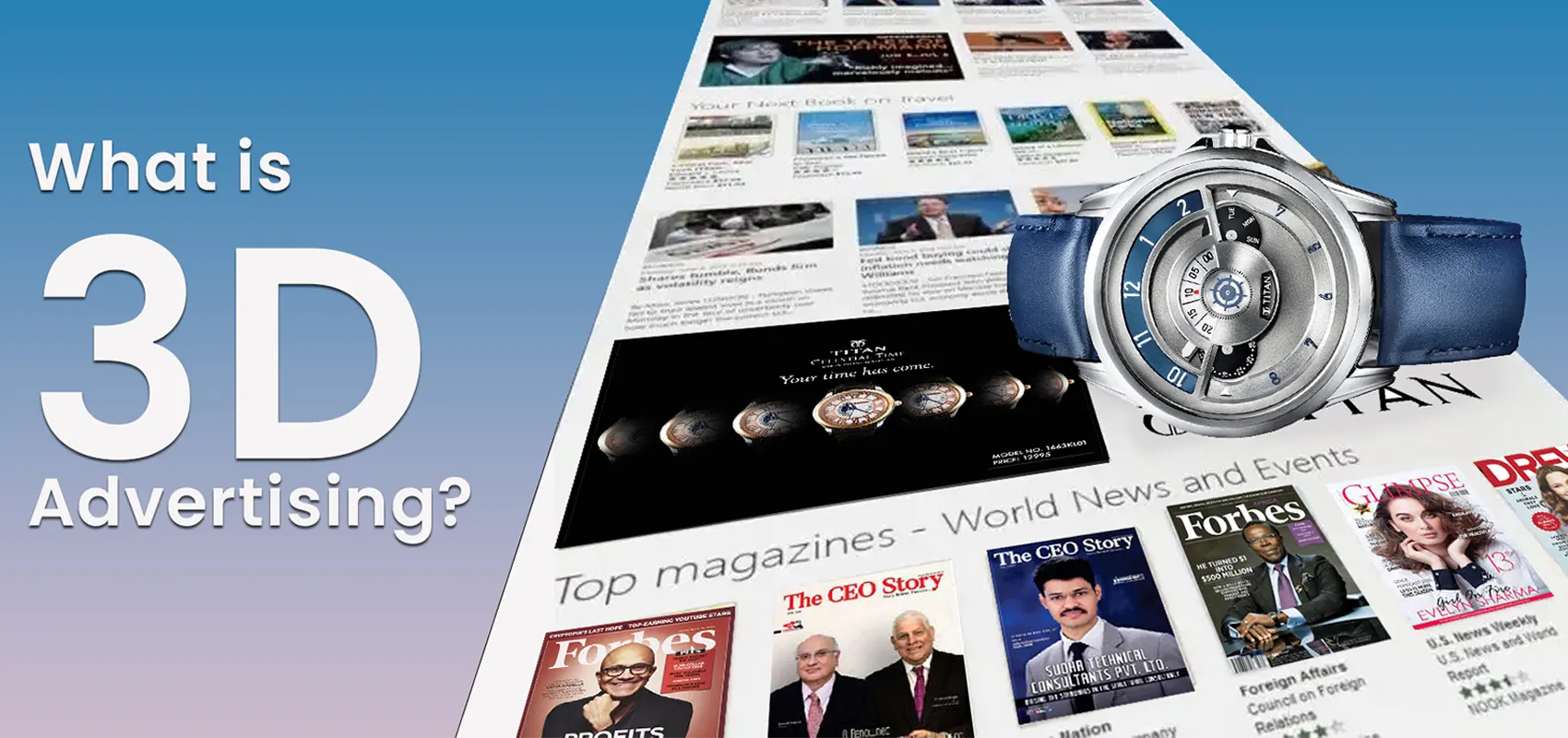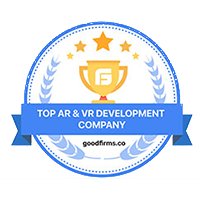Recently, James Cameron stunned moviegoers with his latest sci-fi drama, Avatar 2: The Way of the Water. The flick was truly a visual treat destined to make it big on account of the spectacular three-dimensional experience that the Avatar franchise promised to offer. It was this promise of a three-dimensional (3D) immersive experience that created a huge buzz around the movie, and viewers were eagerly waiting for the latest installment.
To everyone’s delight, the movie did amazingly well, becoming the highest-grossing film of 2022 and the seventh-highest-grossing film of all time.
These were some well-deserved achievements. After all, the franchise has offered some unforgettable moments that swept the audience off their feet and made them crave more.

The 3D technology captured the imagination of viewers and teleported them to the planet Pandora for a highly immersive and lifelike experience. They felt as if they were there on the planet with Jake Sully, the protagonist.
This is the impact of 3D technology. In fact, with all due credit to the makers, the 3D technology is what contributed a great deal to the Avatar franchise and made it what it is today.
The franchise has made it big right from the early days of 3D movies, and since then it has thrived on its unique proposition of offering an immersive and realistic movie-watching experience smartly embedded in a gripping storyline.
And why not, this is how it should be. After all, it all boils down to offering the best user experience, and what else can be the best choice other than applying the latest technology and delivering something no one has seen before?
This goes for all other three-dimensional viewing experiences, including 3D Advertisements. 3D advertisements are making a lot of buzz in the market lately for all the right reasons. They offer the best captivating customer experience that engages them on a deeper level, expanding the sales funnel, enhancing conversion rates, and improving business income with the best ROI in the market possible.
This blog comprehensively covers 3D advertising, starting with the basics of 3D technology and going all the way to discussing its benefits for businesses and different platforms, along with some examples at the end. Sounds great? Read on.
What are 3D advertisements?
To understand what a 3D advertisement is, it will be convenient to break it down into 3D and advertisement.
We will not deep dive into the hardcore technical definitions; otherwise, the blog will grow unbearable. We can simply understand the term “3D” or “three dimensions” in this context represents the added layer of depth in the visual experience. So, while watching 3D content, the user not only perceives the two dimensions of length and breadth but also the depth of a scene.
For clarity, contrast it with 2D content like YouTube videos that run in 2D. The user cannot perceive the distance between an object near them and one far away. It does not appear to be coming out of the screen towards you or sinking into it away from you.
However, if you have watched the movie Avatar in 3D, you can feel that the large whale-like creature is just about to emerge from the screen and hit you. This is what the 3D experience is all about.
Next up is the term “advertisement,” which in simple words means an announcement on a public medium to promote a product, service, event, or anything else.
Combining the two terms, we get the term “3D advertisement,” which implies a way to raise awareness through three-dimensional visuals offering depth perception to the viewers. The users get a better visual experience with a better understanding and affinity for the product than their traditional 2D counterparts.
More so, the features do not end there. 3D advertisements offer a unique appeal to the customer through real-time interactivity and manipulation. This results in enhanced user engagement with the product, which improves sales conversion through better experience and understanding of the product and the brand.
This added component of 3D advertisements facilitates 360° product visualization, 3D configuration, customization, zoom-in/zoom-out, and much more.
3D revolution with Augmented Reality
Interestingly, 3D advertisements have found an additional force in the form of Augmented Reality(AR). Brands are collaborating with tech experts like Queppelin to creatively combine both technologies and give a deeply immersive and highly interactive experience to viewers.
With this combo, users can place the product in their own real-world space and interact with it in the real world.
So, while earlier 3D technology allowed users to explore the products through the screen, AR allows them to do all these actions in their living room, in the real world itself. Here, they can even walk around the product to understand it better. It is more like interacting with the real physical product, just virtually.
Additionally, brands get a bag full of tricks with 3D advertisements. They decide the type of experience for their users and include the functionality accordingly. For example, apart from the aforementioned interactive options, brands can even gamify 3D advertisements and cater to the gaming community. It totally boils down to the brands and how they want to engage with their target audience. See the use cases here.
3D advertisements help brands capture and hold the attention of their valuable audiences and create a special place in the mind and the market. We will see the benefits of 3D advertising in the section below, read ahead.
Types of 3D Advertisements Platforms – Web-based 3D Ads & 3D Billboards Ads
There are two major platforms for 3D advertisements: Web-based interactive 3D advertisements and 3D billboard advertising.
Web-based 3D advertising
These advertisements are visible to the audience while they are browsing the web or scrolling through social media. In the first instance, they might look like any other PPC ad; however, the difference lies in the interactivity factor that these ads offer over and above the benefits of existing online advertisements.
They have all the functionality that we discussed above, like 360-degree product visualization, customization, configuration, modification, and any other function the brand offers through these advertisements.
Enabling Augmented Reality (AR) Ads using Vossle
Queppelin has gone one step ahead in this direction. It utilized Vossle’s platform for its one-of-a-kind Inline-AR feature to come up with Augmented Reality advertisements for its clients. These ads are a unique combination of both 3D advertisements and AR technology, making them an incomparable marketing tool in this space.
The ads are embedded within the web page just like any other online ad, and it automatically becomes interactive as soon as the user scrolls through the web page. The only condition is that the user should give the camera permission to run the ad at the time they land on the page.
The ad runs a quick scan of the user’s environment and enables different AR features like Try-on or Markerless AR in the user’s environment itself.
Users can interact with the digital elements, explore, and even try on the products. This engages the users on a much deeper level than any other advertisement format. You can check out the feature here.
3D Billboard
3D Billboards are a type of digital out-of-home advertising that display attention-grabbing, ultrarealistic 3D visuals. With a unique combination of creative content and 3D technology, these billboards captivate viewers through larger-than-life visual treats.
Such an experience not only engages the customer for longer sessions but also gets etched in their memory for a very long time.
There is a long list of big brands that have explored 3D billboards and created a huge impact in the market. This includes Balenciaga, Amazon, and Netflix among others. Our blog here covers the concept of 3D billboards in detail, click here to read.
7 Benefits of 3D Advertising for Businesses
Before diving deep into the benefits, consider these startling facts:
- An average user is exposed to a whopping number of ads per day, somewhere between 4,000 to 10,000. (Source: Forbes ; Red Crow cited by Forbes)
- On top of it, 42.7% of web users employ adblocker. 80% of these use at least one ad-blocking method, 50% use two, and 10% use four.
On the contrary, consider these facts for 3D advertisement
- 3D advertisement results in 6-8 times higher brand engagement than other advertising campaigns.
- 3D ads increase cart additions by 44% and the final sale by 27%.
Going by the statistics, it’s no wonder consumers become averse, or, say, “adlergic” to advertisements over time. They either skip the ad or, if they can’t, they drift off to some other work.

Also, the advertising space is flooded with competition, making capturing consumers’ attention not only difficult but also costly. In 2021, the cost of Facebook ads increased by 47%. Here, we are not even counting the lack of audience trust that develops over time due to over-exertion by the brands.
The only savior in such scenarios is innovation like 3D advertising that helps beat competition, capture audience attention, and, more importantly, win over their trust. Let’s see the benefits in detail.
Brand Differentiation
In today’s highly online world, consumers rely heavily on online searches and reviews to make a purchasing decision. This makes it critical to maintain a unique and distinguishable online presence. 3D advertisements break the monotony of huge ad influx with eye-catching visuals.
They help brands outsmart their competitors, who are utilizing traditional advertisement methods with 2D images and videos.
Consumers resonate with the product on a deeper cognitive level with 3D advertisements and actively participate in your marketing campaign. This lays the foundation for long-term brand engagement and loyalty.
High Brand Engagement
Consumers find 3D ads way more interesting than their non-interactive counterparts. The simple reason for this is that the interactivity quotient beautifully draws active participation from the viewer. It gamifies the experience for the consumers and they stay on the ad unit interacting with the product for longer durations.
Builds Trust through 3D authenticity
Marketing professors Charles Dennis and Raed Algharabat coined the term “3D authenticity.” It refers to a psychological state in which the viewer perceives the 3D virtual object as the actual object. Users consider it a product they will buy and can rely on the brand to provide realistic previews.
High ROAS
ROAS stands for Return On Ad Spend. It is a Key Performance Indicator (KPI) in online and mobile marketing that evaluates the revenue earned against every dollar spent on an ad campaign. Higher ROAS indicates revenue through an increase in sales.
As 3D ads attract more customer attention, businesses need fewer ad campaigns to fill their sales funnel. This reduces the amount spent on PPC ads and other social media ad campaigns and improves ROAS.
Increases Purchase Intent & Conversion Rate
Purchase intent is the degree of willingness of a customer to buy from a business within a specified period of time. Research shows that the longer the shopper interacts with a product, the more they’ll trust the vendor. In effect, watching a product in 3D increases the chances of a sale by 11 times.
This is due to the fact that 3D advertisements make users appreciate the brand as a value addition. This improves the brand’s image and relationship with the customer. Thus, it encourages more people to buy from the brand in the coming time.
Furthermore, 3D advertisements increase conversion rates, as we saw in the above statistics. Not only do 3D ads increase cart additions by 44% but also the final sale by 27%. Viewing these in the light of high ROAS, we can deduce that brands gain more than they spend on traditional advertising.
Expand Audience base & Website Traffic
While interacting with the product in a 3D advertisement, consumers actively read the advertisement message and curiously click through to the business site. The 3D advertisement ignites curiosity in the viewer, who wants to know more about the product and the brand.
This reflects in improved performance metrics of 3D ads and that of the website such as CTR, engagement, conversions, session duration, website traffic, Search engine ranking, etc.
Reduces Returns
Realistic visualizations of 3D ads help customers make a more informed purchasing decision, which reduces the likelihood of product returns.
Users can check the functionality of the product through a 3D product demo provided in the advertisement. They get a better idea of the physical dimensions and whether the product fits into their parameters. This increases conversion rates and decreases returns.
Examples of 3D Advertisement
To improve your understanding of 3D advertisements, here are some examples.
3D Foldable Mobile Advertisement
We created an introductory 3D advertisement for a mobile manufacturing company to grab eyeballs for their upcoming product launch. It was a smartphone with a foldable form factor.
The ad starts by showing the fast charging capability with an animation of a cable plugging into a blue-colored mobile and charging it fully at a rapid pace. Then the background changes and the mobile phone simultaneously maneuver to show an ultra-HD display with butterflies coming out of it.
The ad is a smartly planned creative that immersively unveils prominent features of the mobile device, including fast charging, the display, a powerful gaming process, a high-quality camera, as well as its color variants. Through all this, it creates a deep impact on the ad viewer.
3D Automobile Advertisement
Queppelin created a 3D advertisement for an automobile company. The ad showcases one hero object, i.e., a sports car, going through various adventures. We used Blender to develop a realistic visual with a Ballistic Suspension Rig to replicate the lifelike movements of the car. Then we used render farming services to ensure high-quality rendering.
The content offers astonishing 3D visuals by creating the illusion of a car bursting out of the screen onto the viewer. Experiences like this make the advertisement linger in their minds for longer periods of time.
3D Footwear Advertisement
Queppelin created a footwear advertisement for our client in Singapore using Blender (Cycles) and utilized Render Farm for hyperrealistic CGI. The ad took a straightforward product showcase approach for the animation of one hero object in 3D.
Conclusion – The Future is 3D Content
The rapid development in the field of immersive technologies has opened new avenues for businesses, and 3D advertisements are one of the coolest ones. It engages the users on a deeper level, develops an emotional connection with the audience, and builds trust in the brand. All this is achieved at a much-reduced cost with high ROAS than other traditional advertising methods.
As a result, the businesses reach out to a larger audience in an impactful way, resulting in the expansion and augmentation of the sales funnel. The result is high revenue with much less investment.
Queppelin is one of the leading companies in the field of immersive technology. We have a large team of 3D designers and developers that have worked on top-class projects for the world’s top companies, including those in the Fortune 500. Contact us today to discuss your 3D project and how you can make the most of it.






